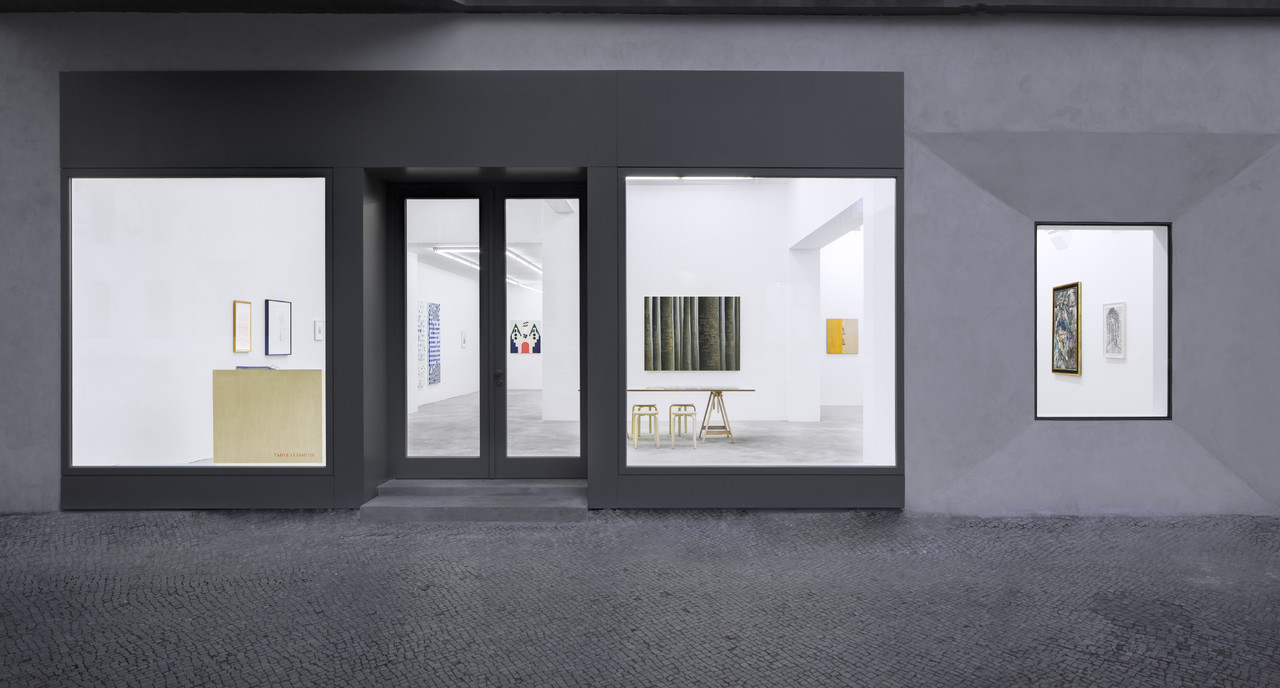Fabula Rasa
7 September – 19 October 2019, Kurfürstenstraße 24/25
Preview: 6 September, 7-9 pm
Tanya Leighton is pleased to present ‘Fabula Rasa’ — a group exhibition that investigates the literary form of the fable from six artistic positions. Recognising the blend of animate and inanimate objects that lays at the core of fables, ‘Fabula Rasa’ focuses on the potential of this interplay to critically reflect the human condition.
The exhibition title is a word play on the concept of the clean slate or ‘tabula rasa’. Life begins without knowledge and lived experience grows our understanding of the world. As much as fables relay shared memories and moral values, they also offer a way to recalibrate ourselves. The works in the exhibition propose perspectives from which to do so.
Sam Anderson’s interest in the dramaturgical narratives of everyday life often leads her to the recast characters that traditionally play set roles. In this case, the tragic-comic figure of the clown, a figure who both entertains and critiques society, is her subject. Both an outsider and an integral part of a community, the classic humorist tells fables of everyday life to question the ways we live together. This ‘clown’, however, is a fabulous and somewhat menacing caricature of itself — a replica dolphin scull, masked with a teardrop, a red nose, and a row of teeth so long it is hard to discern a smile or a grimace.
Antonio Ballester Moreno’s pictographic paintings are distillations of the fundamental ways in which humanity defines itself in relation to the larger world — knowledge, morality and the nature of being. Ballester Moreno’s geometric forms and palette of primary colours speak to an archaic image-memory, exploring what it actually means to be humane. Trees, mountains, moons and suns constitute a universal lexicon while echoing the building blocks of the ancient fable.
The hand-painted animation by Matt Copson introduces archetypal figures from European mythologies into a dystopian limbo. Here, a headless fox circles a maniacally self-obsessed woodpecker whose monologue details a compulsion to define the object of its love. As an allegory for the artist at work or sociopathic manoeuvring, Copson’s parable delivers an unsettling moral about how we relate to the world around us.
Notions of physical malady recur in the work of Jesse Darling. A winding crutch and a bent walking stick emerge like charmed snakes from an altar-like pedestal that floats above the ground. Part of Darling’s larger project, ‘The Ballad of Saint Jerome’, this sculpture retools the eponymous fable to examine the contemporary relationship between healer and healed.
Michael Dean’s sculptures begin in the realm of language – as a means of expressing love, anger, or grasping for understanding. In their translation from text to thing, Dean’s objects and icons become stand-ins for larger narratives. Considering what it means to create a physical extension of oneself, Dean’s concrete and rebar sculptures are human-scaled, bear traces of their making, and introduce new anthropomorphous characters into the exhibition space.
Staring into space through hollow eyes, the vacant, thinking and feeling figure by Austrian artist Heinz Frank is a residue of a body in distress. Part tree, part box, part mask and part spine, its anatomy consists of natural and artificial components that deconstruct the impressive mythical figure of the lion to an assemblage of objects — some quotidian, some bizarre.
